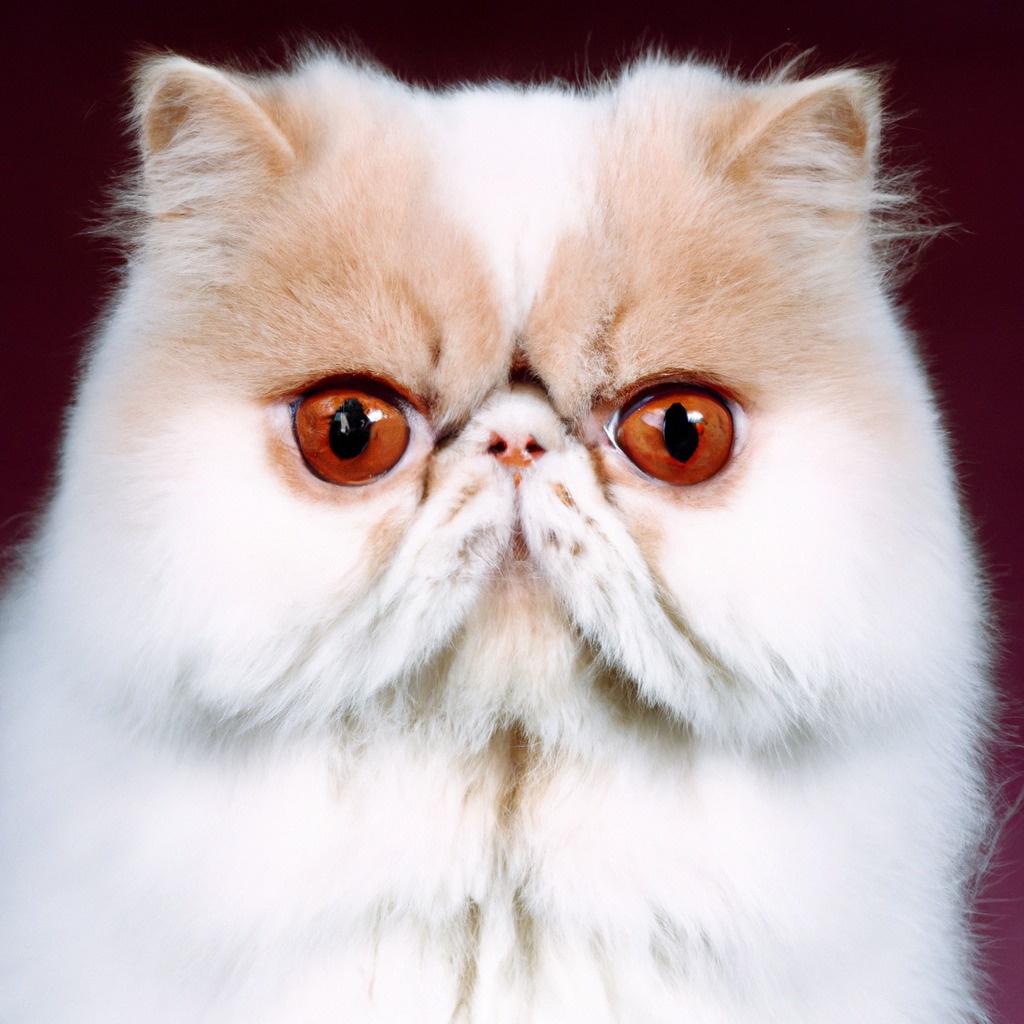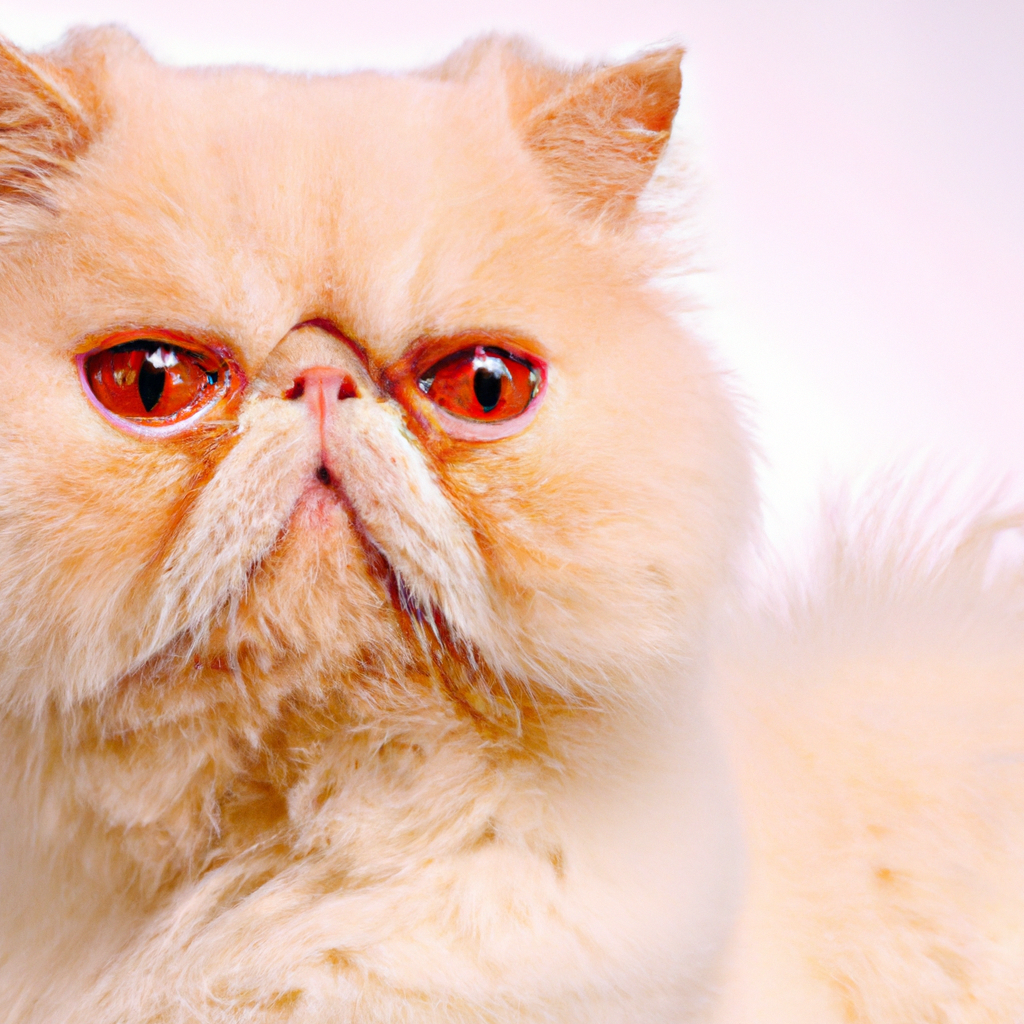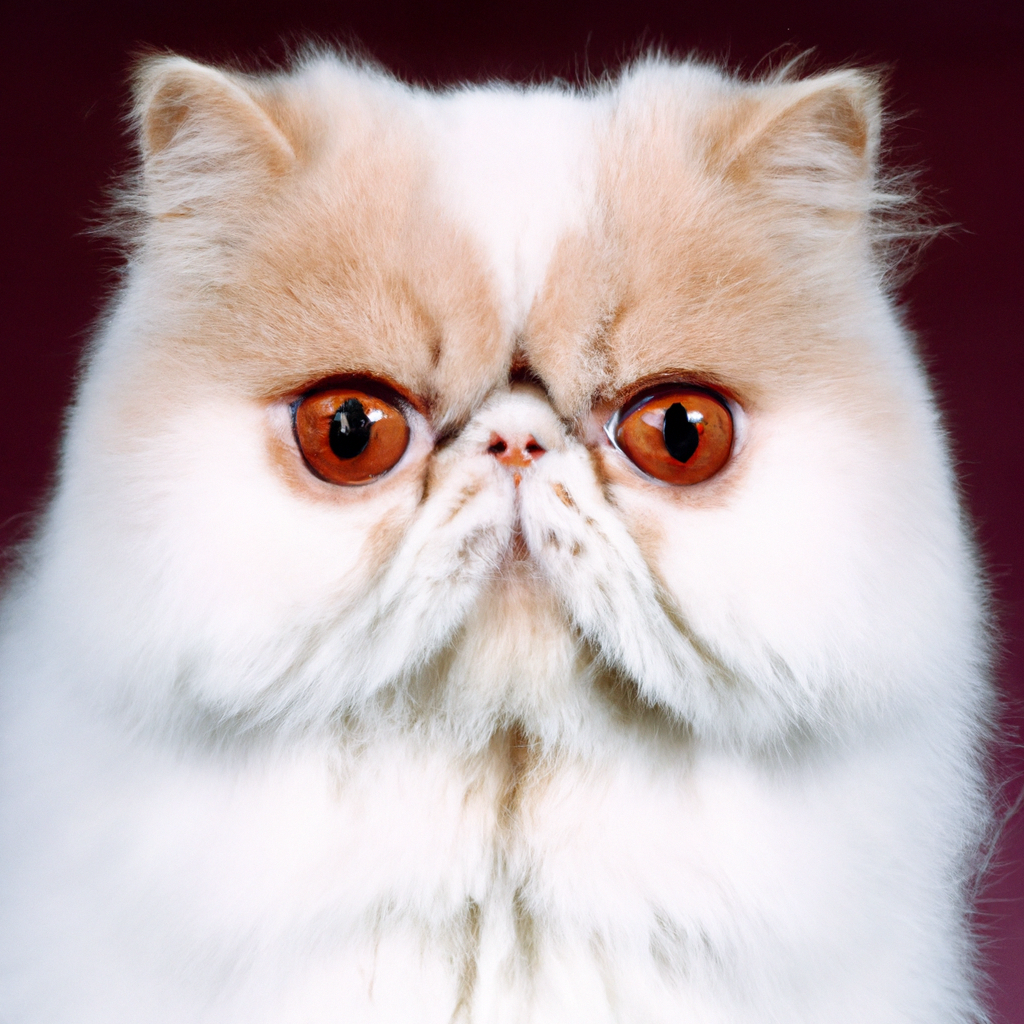Imagine having a feline companion that exudes elegance and grace with every step it takes. Enter the Persian cat, a breed renowned for its luxurious, fluffy coat and striking appearance. In this article, we will explore the distinct characteristics of the Persian cat, from its stunning physical features to its gentle and affectionate temperament. Prepare to be captivated by the charm of these regal creatures.
Appearance

Physical Features
The Persian cat is a beloved breed known for its distinct physical features. One of the most iconic characteristics of the Persian cat is its beautiful round face, complete with large, expressive eyes and a short, stubby nose. These adorable facial features give the Persian cat a sweet and innocent expression that is hard to resist. In addition to their charming face, Persian cats also have a sturdy, cobby body with a broad chest and short, thick legs. They are a medium-sized breed, with males typically weighing between 9-14 pounds and females weighing between 7-11 pounds.
Coat
The Persian cat’s coat is a true showstopper. It is long, thick, and luxurious, requiring regular grooming to keep it in top condition. Persian cats have a double coat, consisting of a dense undercoat and a long, silky topcoat. The texture of their fur is incredibly soft and silky to the touch, making them a pleasure to pet. The Persian cat’s coat extends all over its body, including the tail, which is full and bushy. This breed is known for having one of the most beautiful coats in the feline world.
Colors
Persian cats come in a wide variety of colors and patterns, making them even more visually stunning. They can be found in solid colors such as white, black, blue, red, cream, and chocolate, among others. Additionally, Persian cats can have a multitude of patterns, including tabby, tortoiseshell, calico, and colorpoint. No matter what color or pattern a Persian cat has, their coat is always a striking feature that adds to their overall beauty.
Personality
Temperament
Persian cats have a reputation for being calm and gentle, making them wonderful companions. They have a naturally easygoing and laid-back temperament, which makes them well-suited for living in a tranquil household. Persian cats are known for being affectionate and enjoy curling up on their owner’s lap for a good snuggle. They thrive in a peaceful environment and prefer a relaxed lifestyle. This calm and serene demeanor makes Persian cats ideal for individuals who are looking for a low-maintenance and docile pet.
Playfulness
While Persian cats may be known for their calm nature, they also have a playful side. They enjoy interactive play sessions and will happily chase after toys or play with a feather wand. However, it is important to note that Persian cats are not as energetic or highly active as some other breeds. They prefer shorter bursts of playtime and generally gravitate towards activities that involve less physical exertion. Their playfulness is typically more subdued, but still enjoyable for both the cat and its owner.
Sociability
Persian cats are generally quite sociable and get along well with other pets and family members. They are known for their easy temperament, making them suitable for households with children or other pets. Persian cats are not particularly demanding when it comes to attention, but they do appreciate companionship and enjoy being part of the family. They are loyal and devoted to their owners, often forming strong bonds. These affectionate felines are sure to bring joy and companionship to any household.
Health
Common Health Issues
Like any other breed, Persian cats can have their share of health issues. Some of the most common health problems seen in Persian cats include respiratory difficulties, eye conditions (such as cherry eye and tear duct abnormalities), and dental issues. Additionally, due to their brachycephalic nature (meaning they have a shortened, flattened face), Persian cats are more prone to snoring and breathing difficulties. Regular vet check-ups, proper grooming, and a balanced diet can help mitigate these health concerns and ensure a happy and healthy Persian cat.
Grooming Needs
The Persian cat’s exquisite coat requires regular grooming to keep it looking its best. Daily brushing is recommended to prevent matting and tangles, especially around the neck, armpits, and belly. Persian cats have a dense undercoat, so it’s essential to use a metal comb to reach through the topcoat and remove any loose hair. Additionally, their eyes need special attention as they are prone to tear staining and discharge. Cleaning their eyes daily with a soft, damp cloth will help keep them clean and prevent any discomfort. Regular grooming sessions not only keep your Persian cat looking beautiful but also provide an opportunity for bonding.
Diet and Nutrition
Proper nutrition is crucial for the overall health and well-being of Persian cats. A balanced diet that is rich in protein and low in carbohydrates is recommended to maintain a healthy weight and prevent obesity, which can be a concern for this breed. Persian cats should be fed high-quality cat food specifically formulated for their needs, with a focus on supporting their coat health and digestive system. It’s important to consult with a veterinarian to determine the appropriate diet for your Persian cat based on their individual needs and any specific health concerns.
Size and Weight
Persian cats are a medium-sized breed, with males generally weighing between 9-14 pounds and females weighing between 7-11 pounds. Their sturdy, cobby body gives them a solid and substantial feel. While they may not be as large as some other breeds, Persian cats make up for it with their grace and elegance. Their size and weight contribute to their overall majestic appearance and add to their charm.
Origin and History
The exact origin of the Persian cat is somewhat mysterious, but it is believed that they originated in Persia (modern-day Iran) hundreds of years ago. They were highly revered by Persian nobles and were considered a status symbol. In the 17th century, they were introduced to Europe and gained popularity amongst aristocrats and royalty. Over time, different breeds and variations of the Persian cat have emerged, but they all share common ancestors from the original Persians. The Persian cat’s long and fascinating history is a testament to its enduring popularity and allure.
Breeding and Genetics
Selective Breeding
The breeding of Persian cats involves a careful selection process to preserve and improve the desirable traits of the breed. Breeders aim to produce kittens with the classic Persian look, including the distinct facial features, dense coat, and pleasing body structure. The breeding process involves pairing cats that possess complementary qualities and conform to the breed standards. Responsible breeders prioritize the health and well-being of the cats, ensuring they are free from genetic diseases and other health issues. It is important to obtain a Persian cat from a reputable breeder to ensure the best possible start for your new furry friend.

Color Genetics
The Persian cat’s coat color and pattern are determined by genetics. There are numerous genes that contribute to the different coat colors and patterns seen in Persian cats. The inheritance of these genes can be quite complex, resulting in a wide variety of possible color combinations. Some of the most common coat colors in Persian cats include black, blue, red, cream, and white. Additionally, various patterns such as tabby, tortoiseshell, and colorpoint can occur. Understanding the intricacies of color genetics is a fascinating aspect of breeding Persian cats and contributes to the diversity within the breed.
Famous Persian Cats
Choupette
One of the most famous Persian cats in recent times is Choupette, the beloved pet of fashion designer Karl Lagerfeld. Choupette gained international fame for her luxurious lifestyle and unique personality. Known for her blue-tinged fur and striking blue eyes, Choupette became a muse for Lagerfeld and even had her own social media presence. Her pampered life included private jets, custom-made accessories, and a team of dedicated staff. Choupette’s extravagant lifestyle captured the hearts of many and solidified her status as a true icon in the feline world.
Mr. Pebbles
Another notable Persian cat is Mr. Pebbles, who holds the Guinness World Record for being the Oldest Cat Ever. Mr. Pebbles lived to the extraordinary age of 27 years and 300 days before passing away in 1998. His longevity is a testament to the excellent care he received from his devoted owner and the resilience of the Persian breed. Mr. Pebbles’ record-breaking lifespan serves as an inspiration for cat lovers around the world and highlights the potential for long, happy lives that Persian cats can enjoy.
Popular Varieties
Himalayan
The Himalayan cat is a popular variety of Persian cat known for its striking blue eyes and colorpoint pattern. This breed is a cross between the Persian and the Siamese, combining the best of both worlds. Himalayans have the Persian cat’s distinct facial features and luxurious coat, with the addition of the Siamese’s colors and patterns. Their coat is usually cream or white with colored points on their ears, tail, face, and paws. Himalayans are known for their gentle and affectionate nature, making them fantastic companions for individuals and families alike.
Exotic Shorthair
The Exotic Shorthair is another beloved variety of Persian cat. As the name suggests, this breed has a shorter coat compared to the traditional Persian cat. The Exotic Shorthair shares the Persian cat’s charming round face and sweet expression but with a denser and plushy coat. They come in a wide range of colors and patterns, just like their long-haired counterparts. The Exotic Shorthair combines the best qualities of the Persian and the American Shorthair, resulting in a playful and affectionate cat that is easy to groom. They make wonderful companions for those who admire the Persian’s appearance but prefer a lower-maintenance coat.
Show Standards
Fédération Internationale Féline (FIFe)
The Fédération Internationale Féline (FIFe) is an international federation that sets the standards for cat shows and breed standards. FIFe recognizes and categorizes the Persian cat as one of its recognized breeds. Their standards outline the specific physical characteristics, coat patterns, and colors that define the Persian breed. Persian cats are carefully evaluated based on these standards during cat shows to determine their eligibility and awards.
The Cat Fanciers’ Association (CFA)
The Cat Fanciers’ Association (CFA) is one of the largest cat registries in the world. They also have specific breed standards and guidelines for Persian cats. The CFA recognizes multiple coat colors and patterns for the Persian breed, including solids, tabbies, calicos, and colorpoints. Their standards outline the ideal physical features, temperaments, and grooming requirements for Persian cats. The CFA is a reputable organization that strives to maintain the integrity and standards of purebred cats, including the beloved Persian.
Persian Cats as Pets
Suitability for Families
Persian cats are well-suited for families due to their gentle and calm nature. They are generally tolerant of children and can adapt well to the hustle and bustle of a family household. Persian cats make excellent companions for both young and old family members, providing comfort, affection, and entertainment. It is important to teach children the proper way to interact with cats to ensure a harmonious and safe relationship.
Training and Socialization
Persian cats are generally well-behaved and do not require extensive training. However, early socialization is important to help them become comfortable and confident in various situations. Exposing them to different environments, people, and other animals at a young age will help them develop into well-adjusted and sociable cats. Basic obedience training, such as litter box training and teaching them to come when called, is also recommended. Persian cats are intelligent and can quickly learn and respond to training when done with positive reinforcement techniques.
Exercise Needs
Persian cats are not highly active cats and do not require a lot of exercise. They prefer shorter play sessions and activities that do not involve much physical exertion. Interactive toys, puzzle feeders, and gentle playtime with their owners are great ways to keep them mentally stimulated and provide some exercise. However, it is essential to monitor their weight and prevent obesity by ensuring they have a balanced diet and not overfeeding treats. Persian cats thrive in a calm and quiet environment and are perfectly content spending most of their time indoors.
In conclusion, Persian cats are cherished for their stunning appearance, gentle temperament, and easygoing nature. From their distinctive facial features and luxurious coat to their sweet and affectionate personalities, they make wonderful companions for individuals and families alike. While they require regular grooming and may have some health concerns to watch out for, the love and companionship they bring far outweigh any challenges. Whether you’re looking for a regal show cat or a loving family pet, the Persian cat is a breed that will capture your heart and bring joy to your home.
